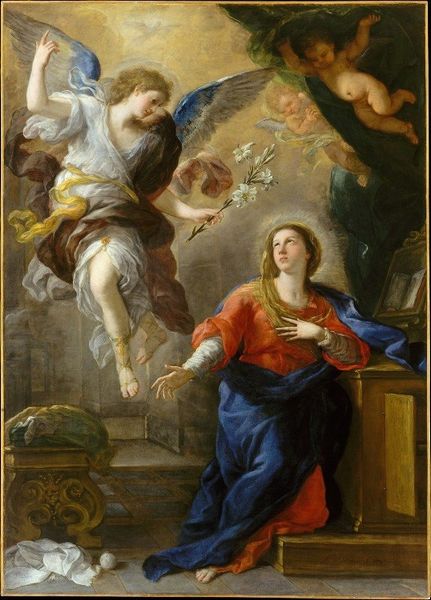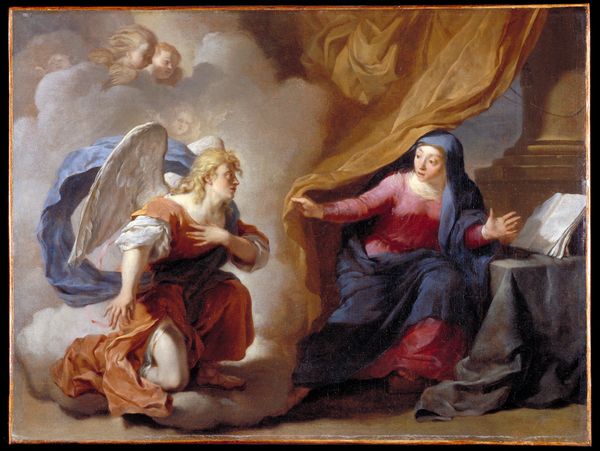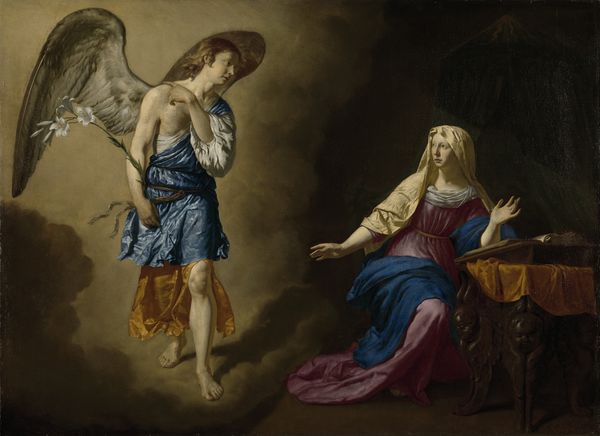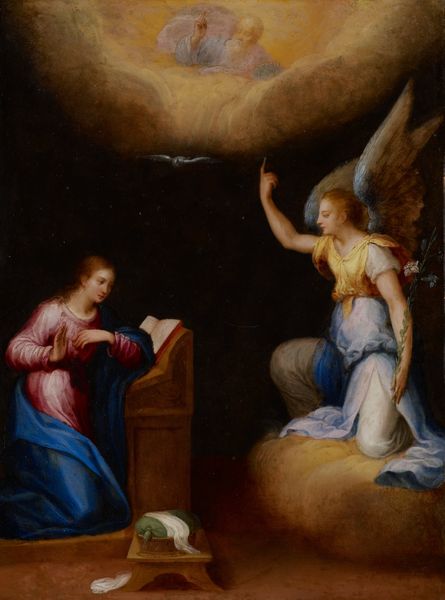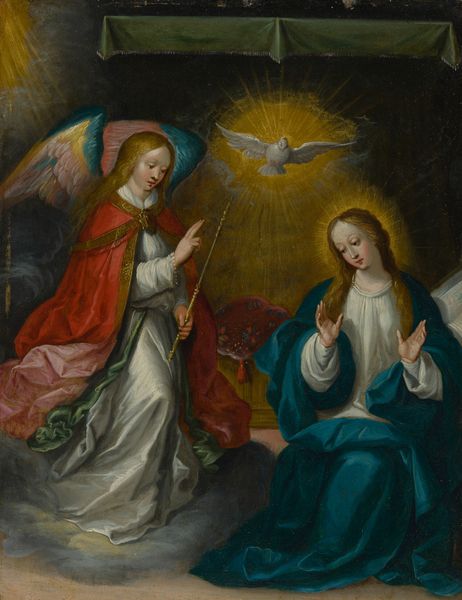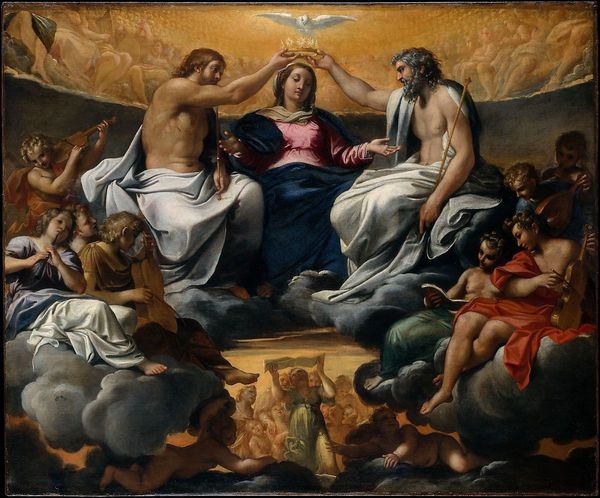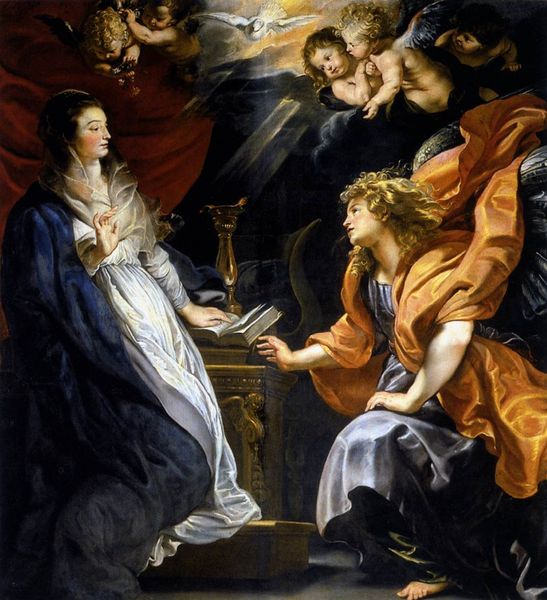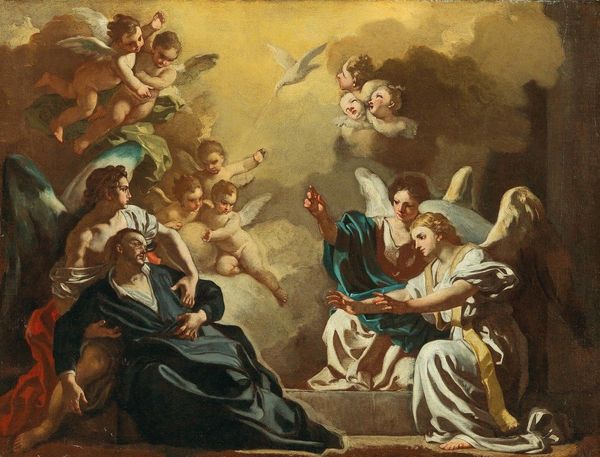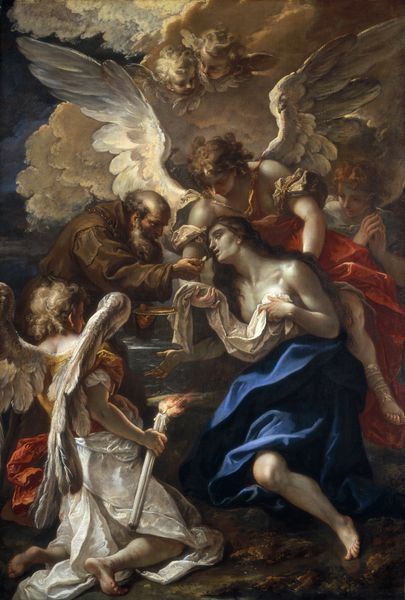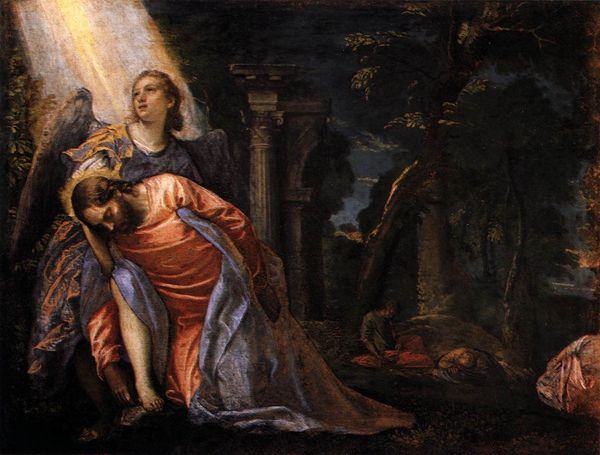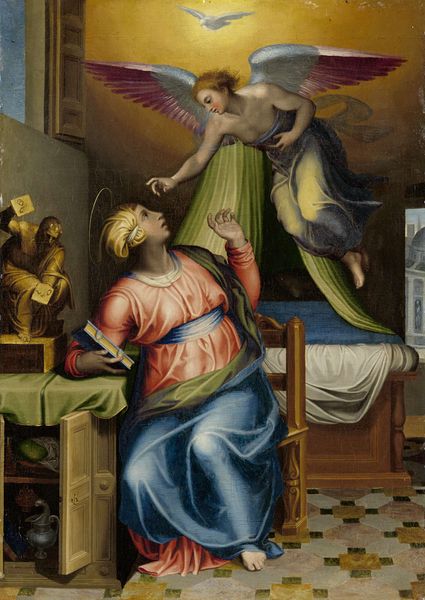
painting, oil-paint
#
portrait
#
allegory
#
baroque
#
painting
#
oil-paint
#
oil painting
#
history-painting
#
portrait art
#
virgin-mary
#
angel
Dimensions: Overall, 28 x 28 3/4 in. (71.1 x 73 cm); painted surface, 27 1/4 x 27 3/4 in. (69.2 x 70.5 cm)
Copyright: Public Domain
Curator: Welcome. We're standing before Philippe de Champaigne's "The Annunciation," painted sometime between 1639 and 1649. You can find it here at the Metropolitan Museum of Art. Editor: My first thought? A cascade of light! It’s almost theatrical, but contained somehow, balanced by the cool blues. It’s an interesting marriage of drama and serenity. Curator: Indeed. Champaigne was a master of compositional equilibrium. Observe the carefully structured arrangement of the figures, the play of light and shadow that emphasizes the spiritual nature of the event. Note, too, the sharp orthogonal lines leading our eyes from foreground to a city-like vista glimpsed in the background. Editor: It's odd, though, isn't it? This angel, bathed in glory, almost businesslike, floating towards her; and Mary— so young, startled, a girl interrupted. There's this beam of divine light, cherubs peeking down, and she’s leaning on what looks like a surprisingly ordinary cabinet. I half-expect to find cleaning supplies inside. Curator: That juxtaposition, as you call it, creates a visual tension, emphasizing the intrusion of the divine into the everyday. It forces the viewer to contemplate the implications of such an event. The lily, held by Gabriel, serves, structurally, to balance the light emanating from above. Editor: Oh, definitely. And you can almost feel the weight of that blue fabric pooling around Mary. It adds a real sense of groundedness, anchoring her in reality, even as this impossible event unfolds. Those chubby cherubs up top though - couldn't Champaigne resist injecting a bit of pure joy into this profound moment? They're delightfully human. Curator: Precisely! These painterly contrasts enrich the image’s semantics: sacred and mundane, divine will and human receptivity. Editor: I like how it reframes that crucial, weighty moment as something deeply personal and a bit vulnerable, too. Almost like catching someone just as their whole life changes direction. Curator: An astute point! Editor: Thanks for the insights. It gave me something to think about regarding Champaigne’s creative vision. Curator: My pleasure; viewing art through these lenses gives renewed insight to a work that deserves deep contemplation.
Comments
No comments
Be the first to comment and join the conversation on the ultimate creative platform.

